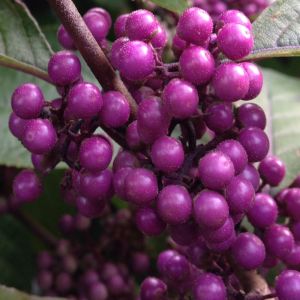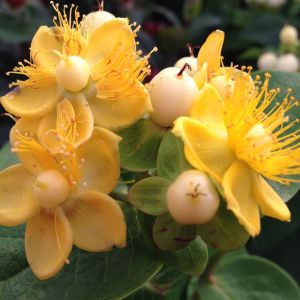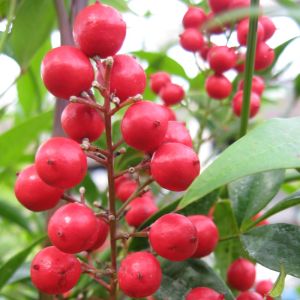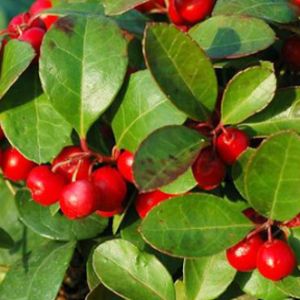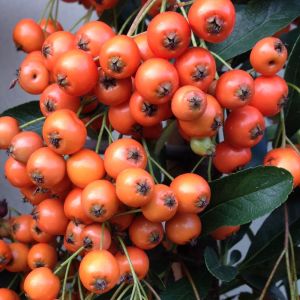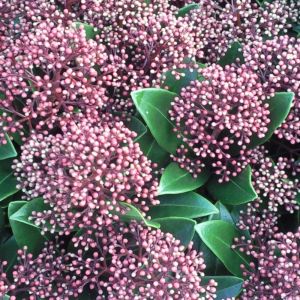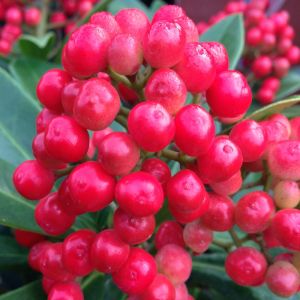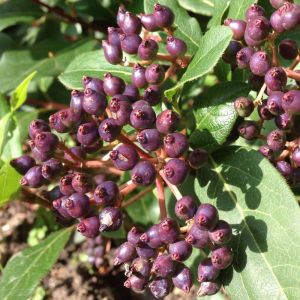
Category Archives: Personal favourites

Bees Needs Week 2017
 With my recent visit to Hampton Court Flower Show, I took advantage of buying several plants in support of ‘Bees Needs Week’. I have a particular love for bumble bees and it gives me great motivation knowing that if I plant several plants that attract them to my garden, I would feel that I am providing for them as they provide for us – win/win scenario!
With my recent visit to Hampton Court Flower Show, I took advantage of buying several plants in support of ‘Bees Needs Week’. I have a particular love for bumble bees and it gives me great motivation knowing that if I plant several plants that attract them to my garden, I would feel that I am providing for them as they provide for us – win/win scenario!
These are the plants that I have chosen while making my way through the floral marquee and other plant stalls. It is a mix of purple, pink and white:
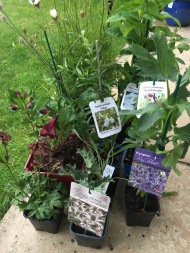 Catananche caerulea ‘Amor White’
Catananche caerulea ‘Amor White’
Astrantia ‘Moulin Rouge’
Phlox paniculata ‘Pina Colada’
Echinacea pallida
Eryngium giganteum ‘Silver Ghost’
Eryngium zabelii ‘Big Blue’
Salvia jamensis ‘Nachtvlinder’
Salvia greggii ‘Alba’
Alstroemeria ‘Inticancha Dark Purple’
Sanguisorba ‘Pink Tanna’
If you would like more information on the Bees Needs Week / Pollinator Awareness Week, please click here.
If you are interested in learning more about these beautiful insects, have a read here.
If you’re feeling generous and would like to make a donation to conserving the bumblebee, then this is where you can make it possible.
Thank you for reading and I hope that as we broaden our knowledge and awareness of the role that the bees play in our everyday life, we may begin ‘paying it back’ with a small change in our approach to gardening for wildlife.
Happy gardening…

Happy New Year for 2017
Creating movement with ornamental grasses

Miscanthus sinensis ‘Strictus in flower
Ornamental grasses are not everyone’s cup of tea, as they don’t tend to bring the desired colour to your garden. I feel it’s the movement which grasses offer, that can bring life and character to your garden. Another added benefit, is that of late season interest, as most impact and colour dissipates. With so many forms and looks to choose from, I felt it necessary to share some of my best recommendations:
- Panicum virgatum ‘Heavy Metal’ – A fantastic option for limited space where some vertical height (approx 5ft) is required. Known for it’s fine sheath of blue-grey foliage and bearing purple-pink inflorescences which tend to pick up the colour of pink and purple late-season flowers. Another recommendation is the slightly shorter Panicum virgatum ‘Shenandoah’ with the burgandy-red tipped foliage.
- Miscanthus sinensis ‘Strictus’ – The foliage of this one will catch your eye! The green spikey leaves are banded with cream-yellow, giving it the name of Porcupine grass. They bear pinkish crinkly flowers on arching 2m stems forming a graceful focal point in the garden.
- Calamagrostis ‘Karl Foerster’ – a very popular clump-forming and upright green grass with linear leaves, bearing tall green flowering panicles at first which then fade to pale brown in Autumn and last well into the Winter.
- Hakonechloa macra ‘Aureola’ – One of my personal favourites with the arching mounds of bamboo-like foliage. The variegated yellow foliage is striking and this grass is particularly good at softening the edges, partnered with something solid and structural like Buxus. Other recommended varieties are ‘All Gold’ with the bright yellow foliage and ‘Nicholas’ with its green foliage that is flushed with flame orange and red in the Autumn.
- Pennisetum alopecuriodes ‘Hameln’ – Certainly one of the most popular grasses with its upright mound of arching green leaves, bearing bottlebrush spikes of silvery-white flowers which can be freshly cut as well as dried. The leaves tend to turn bright golden-yellow in Autumn and the plant can still look attractive until well into the Winter. Other recommended varieties are ‘Little Bunny’ which is just a more compact form and ‘Red Head’ with its soft smokey-pink flower spikes turning to buff as they dry out.
If you would like to benefit from the softness, contrast and movement that these fantastic grasses can offer, then look for a partial shade or sunny position and work some grit into the soil to improve the drainage. Consider the growth over the years and ensure you give it enough space to grow to its full potential. Now gaze out from the window and see the difference they make when there is a slight breeze…
Happy gardening…
Berry Beautiful
The Autumn season is certainly my favourite season, as I love the changes that the season brings. I have always been drawn to berried plants, as they provide colour during the gloomy Winter, as well as food for the birds. The Autumn hues in the foliage colours are also particularly attractive and certainly brings a whole new dimension to the garden in the Autumn. As the season ends, the last of the leaves fall to the ground in almost a surrender to the colder and dormant period.
A few of my favourite plants that form the basis of the Autumn/Winter colour in the form of berries, are:
Luscious Lavender
 It is the time of the year where the Lavender begins to fill the air with it’s uplifting scent and tantalises our senses. How can you not be attracted to the beauty of Lavender and all the beneficial properties that the plant has to offer. It may be tricky to maintain a beautifully shaped and healthy looking plant, but it has always been an integral addition to virtually any well designed garden. One cannot help brushing your hands along the flowers and foliage to take it all in or even admire the beauty of the abundance of flowers. That beauty is irresistible to bees and counts as one of the best attractions for pollinators if you would like to make a contribution in ‘saving the bees’.
It is the time of the year where the Lavender begins to fill the air with it’s uplifting scent and tantalises our senses. How can you not be attracted to the beauty of Lavender and all the beneficial properties that the plant has to offer. It may be tricky to maintain a beautifully shaped and healthy looking plant, but it has always been an integral addition to virtually any well designed garden. One cannot help brushing your hands along the flowers and foliage to take it all in or even admire the beauty of the abundance of flowers. That beauty is irresistible to bees and counts as one of the best attractions for pollinators if you would like to make a contribution in ‘saving the bees’.
 The variety in Lavender can leave you rather indecisive and that decision needs to be made based on flowering time, habit and potential use. Some people may grow Lavender for a specific use such as aromatherapy or even a medicinal use while others may grow it as a functional plant in the design of their garden. They come in several groups and some of the most popular groups include English, French, Dutch and Spanish Lavenders. The flowering period varies according to the different groups and the habit of the plant can be vastly different too. The Spring varieties include French Lavenders and Spanish Lavenders while the succession continues with the English and Dutch Lavenders.
The variety in Lavender can leave you rather indecisive and that decision needs to be made based on flowering time, habit and potential use. Some people may grow Lavender for a specific use such as aromatherapy or even a medicinal use while others may grow it as a functional plant in the design of their garden. They come in several groups and some of the most popular groups include English, French, Dutch and Spanish Lavenders. The flowering period varies according to the different groups and the habit of the plant can be vastly different too. The Spring varieties include French Lavenders and Spanish Lavenders while the succession continues with the English and Dutch Lavenders.
Some varieties worthy of a mention are listed below:
French Lavenders:
Lavandula ‘Devonshire Compact’ – A neater and more compact form with medium sized purple flowers and a fair scent on the foliage and flower.
Lavandula stoechas ‘Papillon’ – A fairly compact form with dark purple flowers with lilac flags and has a fair scent on both the foliage and flowers.
Spanish Lavender:
Lavandula pendunculata ssp ‘Lusitanica’ – A fairly tall stoechas-like form with large purple flowers with lilac flags and has a fairly strong scent on the foliage with a slightly lighter scent on the flower.
English Lavenders:
Lavandula angustifolia ‘Hidcote’ – A beautiful neat and compact or dwarf form with dark blue/purple flowers and a strong scent on both the foliage and flowers.
Lavandula angustifolia ‘Munstead’ – A fairly compact form with slightly lighter blue flowers and a strong scent on both foliage and flowers.
Lavandula angustifolia ‘Felice’ – Another dwarf/compact form with short flower stems and highly scented light purple-blue flowers.
Lavandula x intermedia ‘Sussex’ – A taller form carrying a pungent scent on both foliage and flowers.
Dutch Lavender:
Lavandula x intermedia ‘Vera’ – A very useful form for low hedging with light purple flowers and has a fairly strong scent on the foliage and flowers.
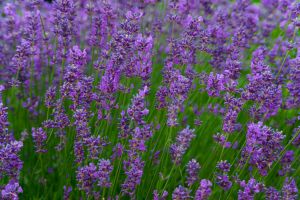 One of the most frequently asked questions is: ‘How can I stop my Lavender from getting too woody?’ This will happen at some stage in the growth of the Lavender, but through some good pruning in early Spring and following the rule of cutting back not more than two thirds of last season’s growth, you should be able to maintain a neat appearance with minimal woodiness developing.
One of the most frequently asked questions is: ‘How can I stop my Lavender from getting too woody?’ This will happen at some stage in the growth of the Lavender, but through some good pruning in early Spring and following the rule of cutting back not more than two thirds of last season’s growth, you should be able to maintain a neat appearance with minimal woodiness developing.
If you have not yet grown Lavender, it is well worth a try, as the scent is to die for…, but do make sure you have a sunny spot with well drained soil.
Tips to a successful Lavender: Sunny position, loose gritty soil that drains well, trim back two thirds of last seasons growth in the early Spring and the odd bit of liquid feed to boost the flowering. With regards to watering, keep the plant slightly on the dry side.
Happy gardening!
Spring flowering Clematis varieties
 If you think of one climber that puts on a huge show for us in Spring, it’s Clematis montana varieties. The plants are adorned with masses of four-petalled single flowers in a range of pinks and white from late Spring to early Summer. They are a perfect choice for a pergola or an arch, as they have a vigorous growth rate which creates fast coverage.
If you think of one climber that puts on a huge show for us in Spring, it’s Clematis montana varieties. The plants are adorned with masses of four-petalled single flowers in a range of pinks and white from late Spring to early Summer. They are a perfect choice for a pergola or an arch, as they have a vigorous growth rate which creates fast coverage.
The secret to success with Clematis, is to ensure it is planted in a sheltered sunny position in moisture-retentive, well-drained soil. Even though a sunny position is best for producing good bloom, there are many varieties in the montana group that are tolerant of shade too. It is essential to keep the base of the plant cool by planting other plants around it to create shade at the roots or place a layer of pebbles or bark to act as a mulch. Always plant with the crown of the plant about 2 to 3 inches (5-8cm) below the soil level, as this will encourage plenty of new shoots from below ground level.
 Pruning is always a bit of a challenge with Clematis and often it is hard to make sense of all the pruning groups and what they mean. The montana species fall into group 1. Like all early-flowering clematis such as the montana species, its requires little pruning other than the removal of any dead or damaged growth after flowering.
Pruning is always a bit of a challenge with Clematis and often it is hard to make sense of all the pruning groups and what they mean. The montana species fall into group 1. Like all early-flowering clematis such as the montana species, its requires little pruning other than the removal of any dead or damaged growth after flowering.
With so many varieties now available on the market, you are spoilt for choice. If shades of pink or white fits into your planting scheme, then why not try some of my recommended varieties to brighten up your garden this Spring:
Clematis montana ‘Grandiflora’ – This variety has trifolate leaves with pure white blooms that can reach up to 7cm across.
Clematis montana ‘Freda’ – A fast growing shade tolerant variety reaching 7m and has bronze young foliage and deep cherry-pink flowers of about 5cm across.
Clematis montana var. rubens ‘Tetrarose’ – This vigorous variety has large bronze-green leaves on reddish brown stems with rich mauve-pink flowers with golden yellow stamens.
Clematis montana ‘Elizabeth’ – Another vigorous shade tolerant variety with bronze young trifoliate leaves turning mid green with age, bearing slightly scented pale pink flowers of about 6cm width.
Clematis montana ‘Fragrant Spring’ – a highly perfumed vigorous variety with dark-green divided leaves, tinged purple when young, and bearing deep pink flowers in abundance during late Spring.
Hopefully you are inspired to visit your local Garden Centre and see which varieties they sell, so you can buy one that will create some great visual impact on a bare wall or fence for this Spring.
Happy gardening!
Magnificent Magnolias
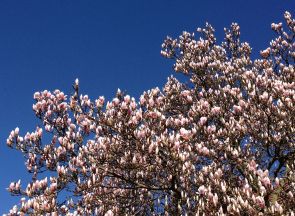 It’s the time of the year when the Magnolias begin to show colour. With blooms so bold, how can you not be blown away when you see a large Magnolia in full flower. With so much variety, there is also a Magnolia to suit everyone. You might think that your garden is too small to have a Magnolia, but with species such as Magnolia stellata, it makes it possible to grow them in pots too. So even in limited space, you could take advantage of their magnificent blooms.
It’s the time of the year when the Magnolias begin to show colour. With blooms so bold, how can you not be blown away when you see a large Magnolia in full flower. With so much variety, there is also a Magnolia to suit everyone. You might think that your garden is too small to have a Magnolia, but with species such as Magnolia stellata, it makes it possible to grow them in pots too. So even in limited space, you could take advantage of their magnificent blooms.
Here is a list of some of my highly recommended ones:
 Magnolia stellata is best used as specimen plants in gardens with limited space. Reaching heights of only 2m they can also be grown in pots on patios. Unfortunately, they only come in white star-shaped flowers, but they do produce an abundance of flowers to make up for it.
Magnolia stellata is best used as specimen plants in gardens with limited space. Reaching heights of only 2m they can also be grown in pots on patios. Unfortunately, they only come in white star-shaped flowers, but they do produce an abundance of flowers to make up for it.
Magnolia x soulangeana is one of the most popular with the goblet-shaped blooms in a pink/white combination. One of these in full flower in a good year can cause car accidents on a roadside! As it gets in excess of 6m high, they are ideal for larger gardens that require a good focal point in early Spring, such as on the opposite side of a patio.
Magnolia ‘Susan’ has narrow goblet-shaped, fragrant flowers with burgundy on the outside and paler on the inside. Reaching about 4m, means that it can be utilized in most gardens as a specimen plant.
Magnolia ‘Heaven Scent’ produces goblet-shaped, fragrant blooms which are flushed with pale pink on the outside with a magenta central stripe.They can reach 12m high when mature, so keep this mind when picking this one…some space required, and a chat with the neighbour.
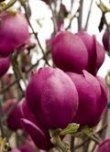 Magnolia ‘Black Tulip’ may carry less bloom that other Magnolias, but their large goblet-shaped purple blooms stand out against the bare stems as if to demand attention. Absolutely awesome.
Magnolia ‘Black Tulip’ may carry less bloom that other Magnolias, but their large goblet-shaped purple blooms stand out against the bare stems as if to demand attention. Absolutely awesome.
Magnolia liliiflora ‘Nigra’ is a nice compact form only reaching approximately 4m. Another fantastic option for containers or small gardens as a focal point. It produces lily-shaped dark purple-red blooms in early Summer.
Magnolia grandiflora is an evergreen species that produces highly fragrant cream cup-shaped blooms the size of a large hand (approx 25cm across). To see one of them at their best, they become a ‘must have’ plant for the avid gardener. It is also a popular wall shrub option, as long as it is grown on a sheltered east, west, or south wall.
All Magnolias are best grown in full sun or partial shade and require a moist, but well-drained ericaceous (acidic) soil – they seem to grow best when the soil is slightly acidic, even though they can tolerate neutral soil in some cases. They are not fond of cold winds so make sure the desired position is sheltered, for best results.
Pruning is best done when the tree is actually in leaf, so mid-late Summer makes for the best opportunity to shape it for the season to come.
They are certainly one of my favourite feature plants in the garden, as they make a huge impact and will provide you with many years of enjoyment.
Happy gardening!









